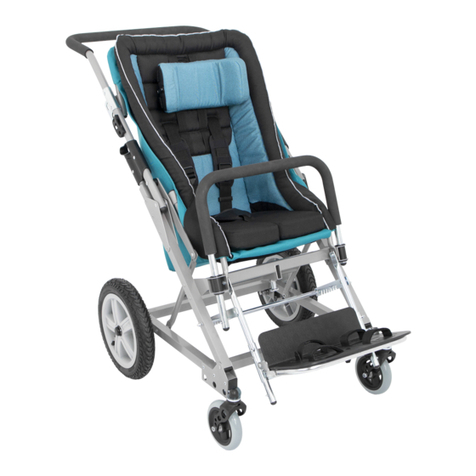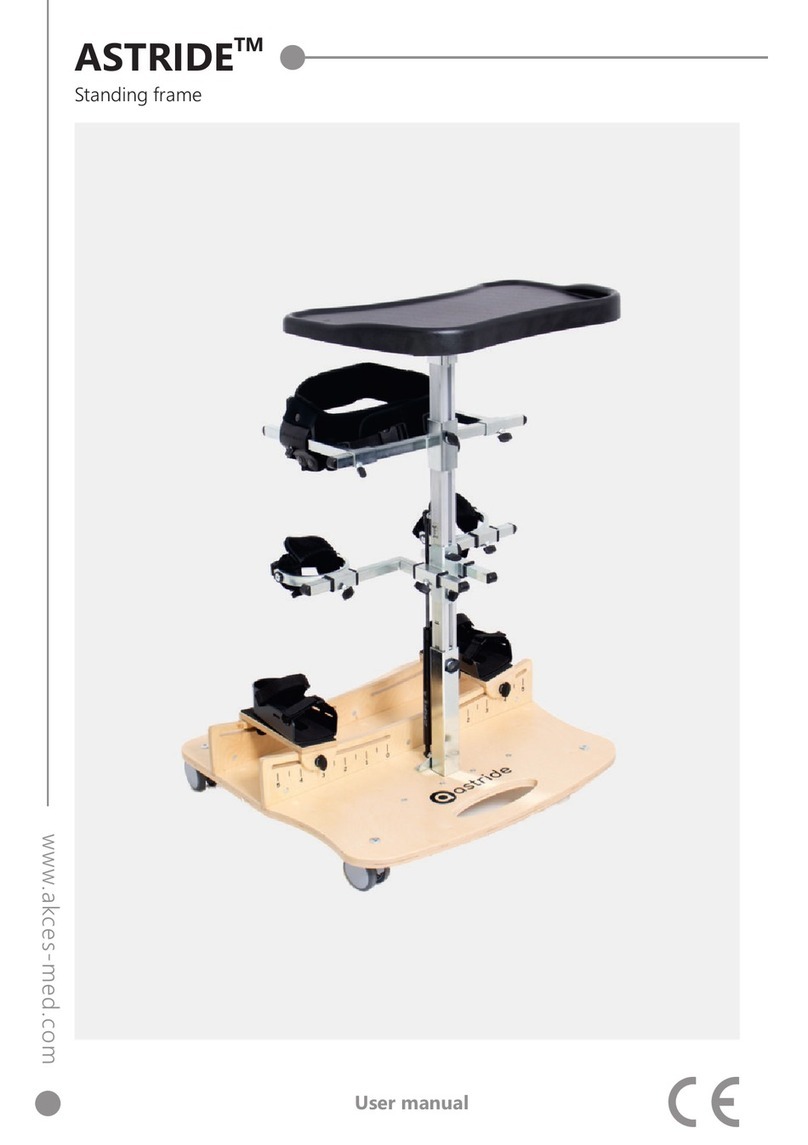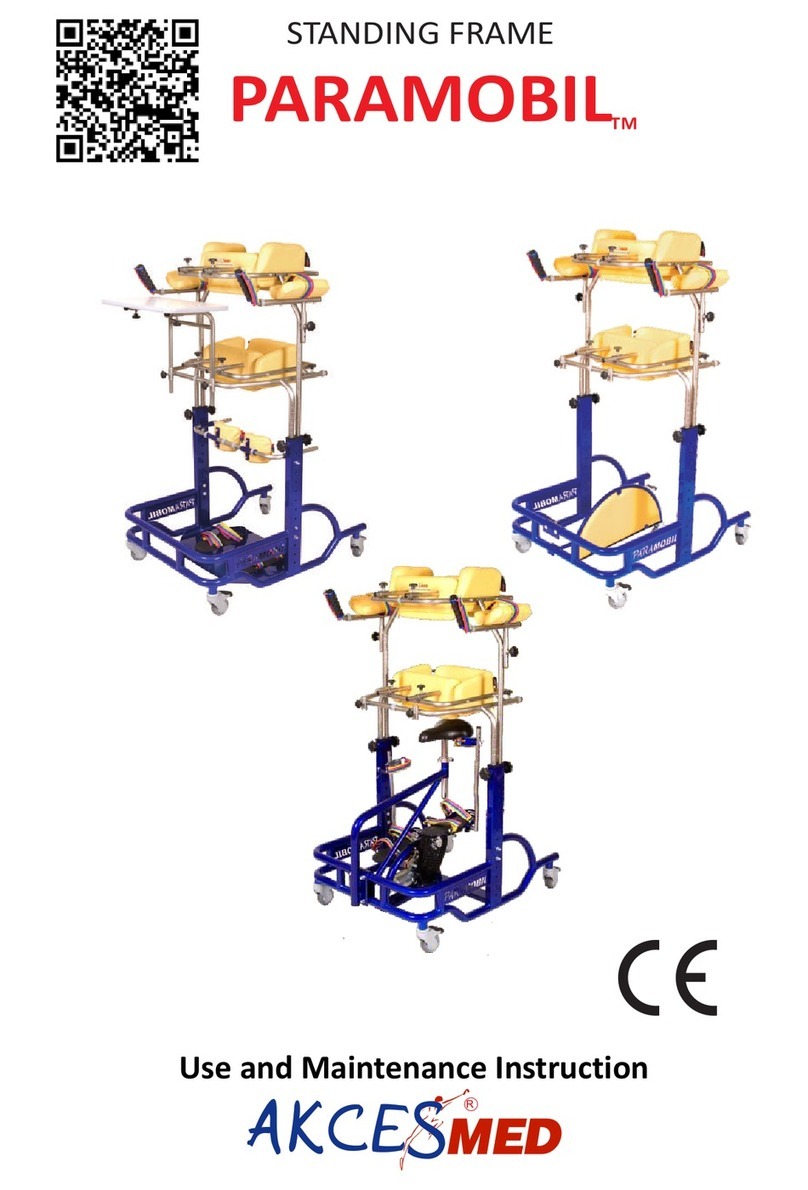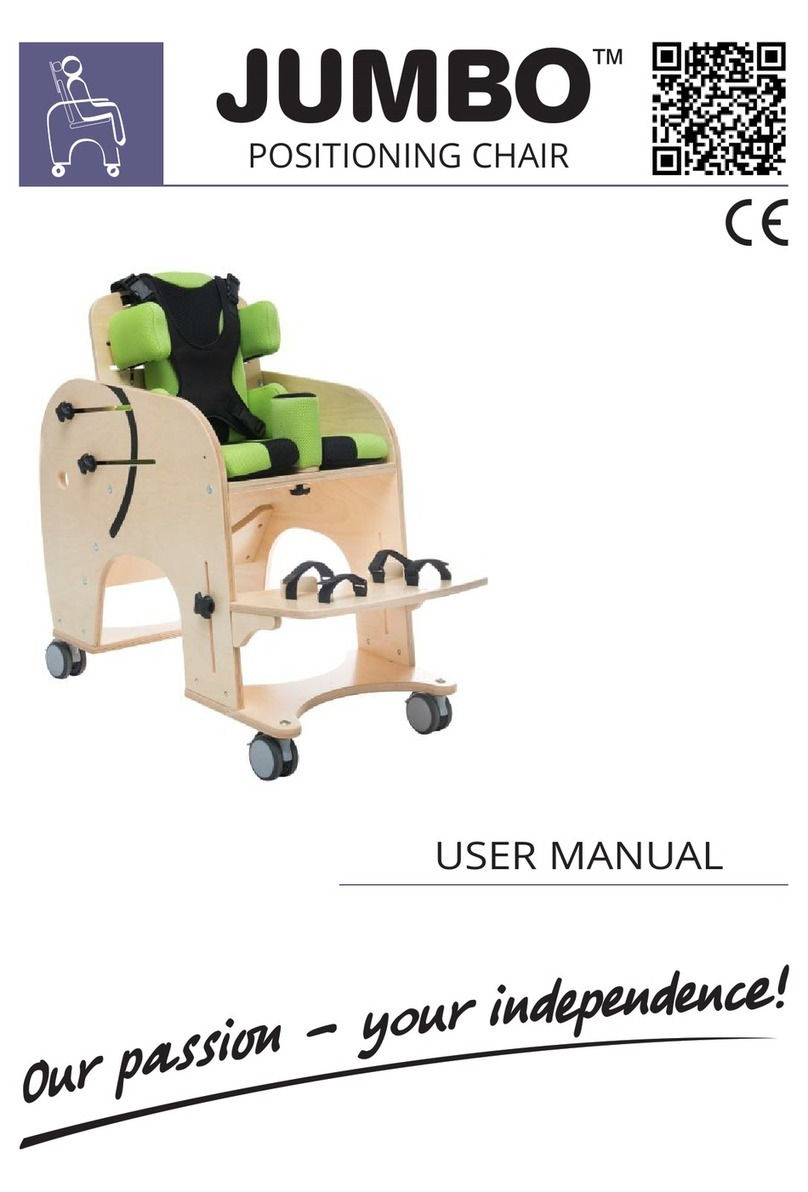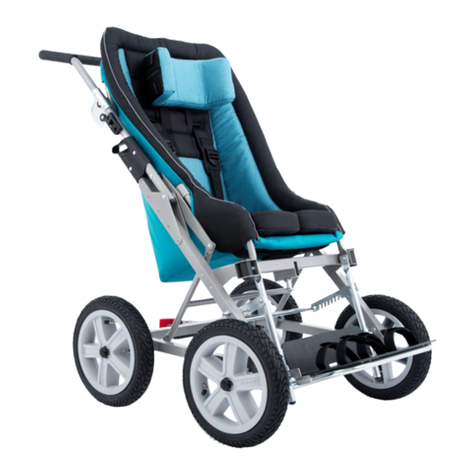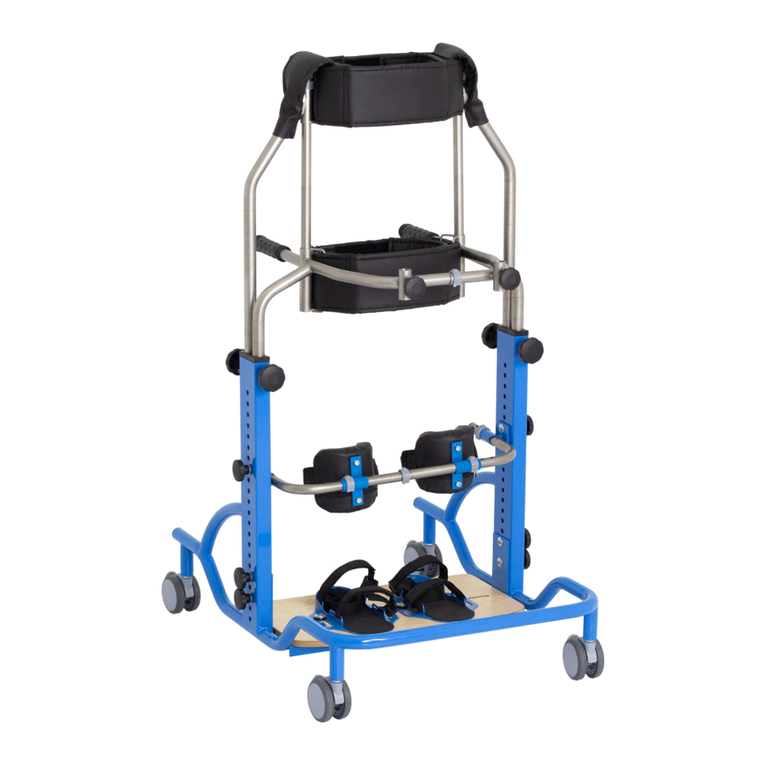
1. THE PURPOSE OF USER MANUAL
The instruction manual contains basic information necessary to properly prepare the chair before use, use
the chair, maintain and clean the chair.
TM
Before using the JUMBO chair for the first time, the user (or caregiver) is obliged to familiarize
himself/herself with the user manual.
This user manual should be kept in an easily accessible place. The manual is intended for people who look
after disabled users, as well as for doctors and physiotherapists handling the chair.
2. INDICATIONS AND CONTRINDICATIONS FOR USE
źMuscles diseases with weakness and paralysis (dystrophy, myasthenia gravis, myositis).
źDegeneration and neurological diseases.
Both for flaccid people with reduced muscle tone and for people with spasticity. The device can also be really
useful for people who require long-term relief of one or both lower limbs. It is an irreplaceable aid in the
rehabilitation process, both in terms of movement and social integration. The device is great help during everyday
activities such as rehabilitation but also during playing, studying or having meals. The selection of the appropriate
size of the device depends on medical indications and anatomical parameters, regardless of the age of the user.
Contraindications for sitting:
źDemyelinating disease (e.g. multiple sclerosis - SM).
źAfter head and spinal cord injuries and spine trauma with paralysis and paresis.
źIdentified brain dysfunction when sitting upright.
The device is recommended for people in the following cases:
These medical devices are intended for people with orthopedic, neurological and cardiological diseases and for
people after surgery, with musculoskeletal dysfunctions, who have not acquired the ability to sit independently or
who have difficulties in adopting and maintaining the sitting position.
źCerebral palsy – various types and forms.
źBrain and spinal cord injuries with lower limbs paralysis and weakness, balance and motor coordination
disorders with different etiology
źMeningocele.
źGenetic disorders.
źOther condition connected with muscles weakness, paralysis and musculoskeletal disorders.
źCritical condition of the user.
źParalysis.
źDeep sedation.
źUntreated deep vein thrombosis.
źSevere arthritis of the cervical spine.
źHemodynamic instability.
źPulmonary embolism.
źUnstable fractures with specific orthopedic recommendations, including spine fractures.
źRecent myocardial infarction in the last 24 hours.
źFresh postoperative wounds or non-healing wounds in the back area, pelvic girdle area, hip joints and
thighs.
źUsers with mental disorders should not be left in the device without the supervision of a caregiver.
5

